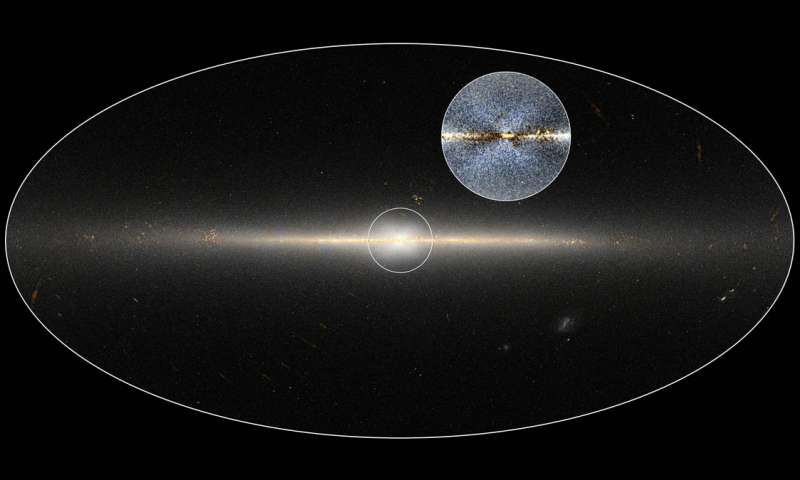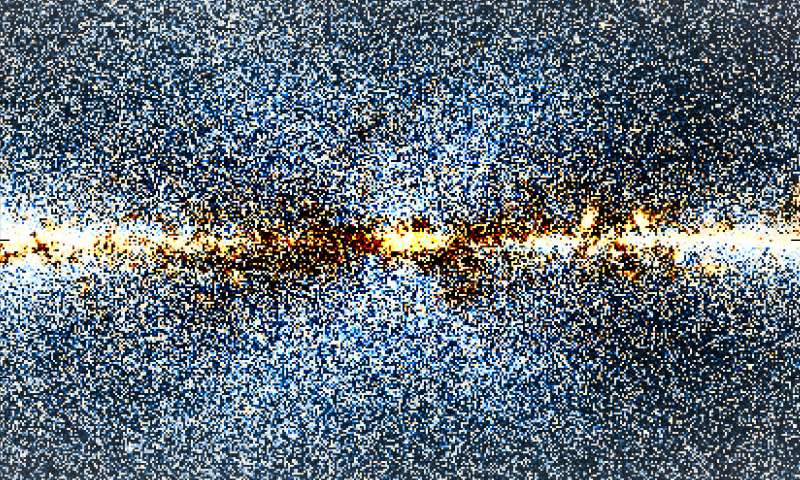It looks like you're using an Ad Blocker.
Please white-list or disable AboveTopSecret.com in your ad-blocking tool.
Thank you.
Some features of ATS will be disabled while you continue to use an ad-blocker.
7
share:
Interesting article just out on phys.org..
X Marks the spot at the center of our Milky way galaxy..

X Marks the spot at the center of our Milky way galaxy..

Previous computer models, observations of other galaxies, and observations of our own galaxy have suggested that the X-shaped structure existed. But no one had observed it directly; and some astronomers argued that previous research that pointed indirectly to the existence of the X could be explained in other ways. "There was controversy about whether the X-shaped structure existed," says Dustin Lang, a Research Associate at the Dunlap Institute for Astronomy & Astrophysics, University of Toronto, and co-author of the paper describing the discovery. "But our paper gives a good view of the core of our own galaxy. I think it has provided pretty good evidence for the existence of the X-shaped structure." Read more at: phys.org...
The results appear in the July issue of the Astronomical Journal. The lead author is Melissa Ness, a postdoctoral researcher at the Max Planck Institute for Astronomy in Heidelberg. The Milky Way Galaxy is a barred spiral galaxy: a disk-shaped collection of dust, gas and billions of stars, 100,000 light-years in diameter. It is far from a simple disk structure, being comprised of two spiral arms, a bar-shaped feature that runs through its centre, and a central bulge of stars. The central bulge, like other barred galaxy's bulges, resembles a rectangular box or peanut when viewed—as we view it—from within the plane of the galaxy. The X-shaped structure is an integral component of the bulge.
An enhanced, close-up view centred on the Galaxy’s bulge and the blue-tinted “X.” Credit: D. Lang/Dunlap Institute
Astronomers think the bulge could have formed in two different ways: it may have formed when the Milky Way Galaxy merged with other galaxies; or it may have formed without the help of external influences as an outgrowth of the bar, which itself forms from the evolving galactic disk. Lang and Ness's finding supports the latter model which predicts the box- or peanut-shaped bulge and the galactic X. This latest, clearest view of the bulge emerged when Lang re-analyzed previously released data from the Wide-field Infrared Survey Explorer (WISE), a space telescope launched by NASA in 2009. Before ending its initial mission in 2011, WISE surveyed the entire sky in infrared—imaging three-quarters of a billion galaxies, stars and asteroids.
One of the original tweets showing the WISE map of the Milky Way Galaxy. The “X” is visible in the centre of the image. Credit: D. Lang; Dunlap Institute
Read more at: phys.org...
This just goes to show just how much we are still learning about our own neighborhood.
Interesting. I wonder how does that X look like in 3D, perhaps like two funnels joined end to end?
new topics
-
Are you ready for the return of Jesus Christ? Have you been cleansed by His blood?
Religion, Faith, And Theology: 48 minutes ago -
Chronological time line of open source information
History: 2 hours ago -
A man of the people
Diseases and Pandemics: 3 hours ago -
Ramblings on DNA, blood, and Spirit.
Philosophy and Metaphysics: 3 hours ago -
4 plans of US elites to defeat Russia
New World Order: 5 hours ago -
Thousands Of Young Ukrainian Men Trying To Flee The Country To Avoid Conscription And The War
Other Current Events: 8 hours ago -
12 jurors selected in Trump criminal trial
US Political Madness: 11 hours ago -
Iran launches Retalliation Strike 4.18.24
World War Three: 11 hours ago
top topics
-
George Knapp AMA on DI
Area 51 and other Facilities: 17 hours ago, 26 flags -
Israeli Missile Strikes in Iran, Explosions in Syria + Iraq
World War Three: 12 hours ago, 17 flags -
Thousands Of Young Ukrainian Men Trying To Flee The Country To Avoid Conscription And The War
Other Current Events: 8 hours ago, 6 flags -
Iran launches Retalliation Strike 4.18.24
World War Three: 11 hours ago, 6 flags -
Not Aliens but a Nazi Occult Inspired and then Science Rendered Design.
Aliens and UFOs: 17 hours ago, 5 flags -
12 jurors selected in Trump criminal trial
US Political Madness: 11 hours ago, 4 flags -
4 plans of US elites to defeat Russia
New World Order: 5 hours ago, 2 flags -
A man of the people
Diseases and Pandemics: 3 hours ago, 2 flags -
Chronological time line of open source information
History: 2 hours ago, 2 flags -
Ramblings on DNA, blood, and Spirit.
Philosophy and Metaphysics: 3 hours ago, 1 flags
7


